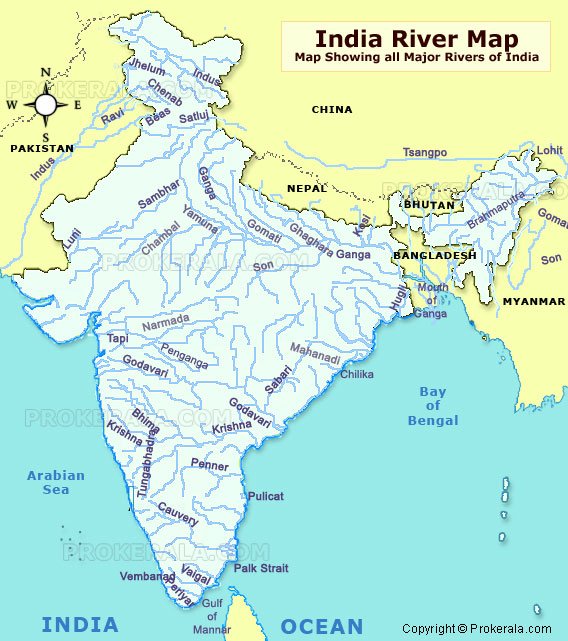“Rivers of India” a video tutorial

https://youtu.be/999ngrj_BHM/
| The river system of India can be classified into four groups – 1. Himalayan rivers 2. Deccan (Peninsular) rivers 3. Coastal rivers and 4. Rivers of inland water drainage. |
| Luni, Machhu, Banas, Rupen, Saraswati and Ghagghar are examples of rivers with inland water drainage, i.e. they do not empty into the ocean but get lost into the sand. |
| Subarnarekha, Vamsadhara, Nagavali, Vaigai, Netravati and Sharavati are examples of coastal rivers. |
| The longest flowing river in India is the Ganges or Ganga followed by Godavari, Yamuna, Krishna and Narmada. |
| The longest river which flows through India is the Indus which originates in Tibet and enters Pakistan before flowing into the Arabian Sea. |
| The Ganges is also known as the Bhagirathi since King Bhagirath was responsible for bringing it from the heavens to the earth. The part of the River Ganga which flows into Bangladesh is known as Padma. |
| Most of the Indian rivers flow into the Bay of Bengal but some like Narmada,Tapti, Netravathi and Periyar flow into the Arabian Sea. |
| Five rivers of erstwhile Punjab are Sutlej, Ravi, Beas, Jhelum and Chenab |
| The river also known as Dakshin Ganga is Godavari |
| The Brahmaputra is known as Yarlung Tsangpo in Tibet and as Dihang in Arunachal Pradesh. The Brahmaputra river is known as Jomuna in Bangladesh. |
| The river known as Singi Khamban (Lion’s mouth) in Tibet River Indus |
| The river known as Bengal’s sorrow is River Damodar |
| Prayag or Allahabad is believed to be the confluence (sangam) of these rivers Ganga, Yamuna and the mythical Saraswati |
| The number of Indian rivers which have been classified as major rivers by the Government is Twelve. |
| There are three Trans-Himalayan rivers which originate in the high Tibetan Plateau and cut across the mighty Himalayan ranges. Indus, Brahmaputra, and Sutlej. |